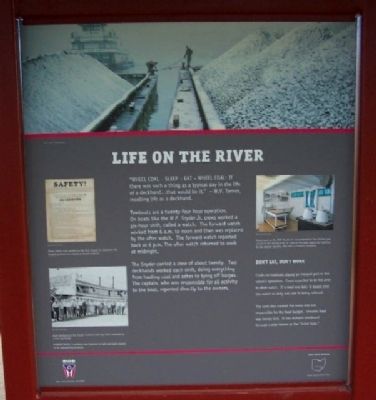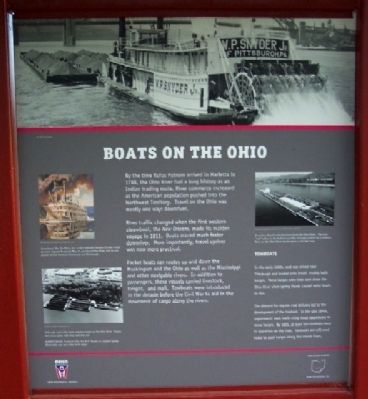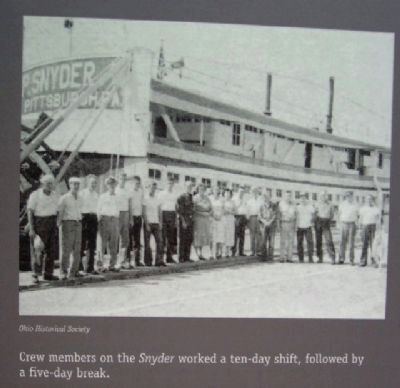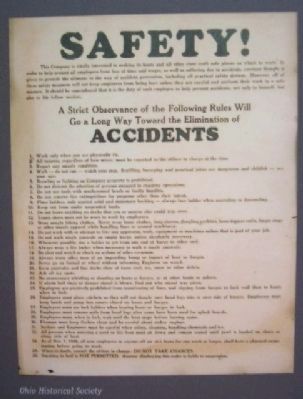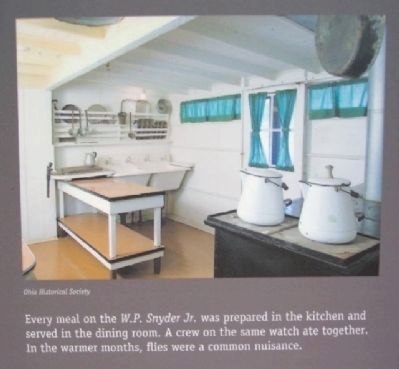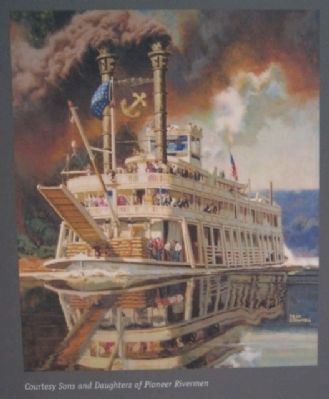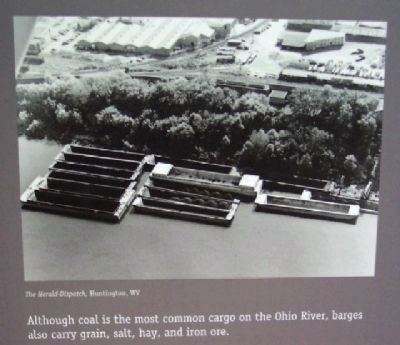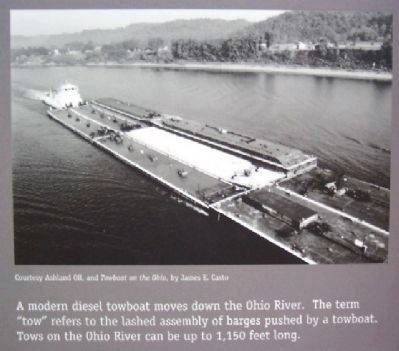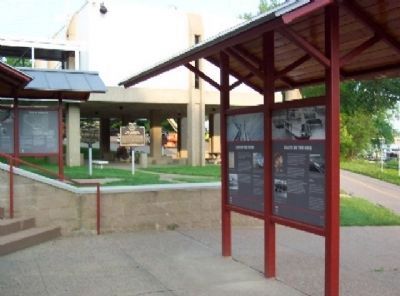Marietta in Washington County, Ohio — The American Midwest (Great Lakes)
Life on the River / Boats on the Ohio
Life on the River
“Wheel Coal - Sleep - Eat - Wheel Coal: If there was such a thing as a typical day in the life of a deckhand...that would be it.” - W.V. Torner, recalling life as a deckhand.
Towboats are a twenty-four-hour operation. On boats like the W.P. Snyder Jr. crews worked a six-hour shift, called a watch. The forward watch worked from 6 a.m. to noon and then was replaced by the after watch. The forward watch reported back at 6 p.m. The after watch returned to work at midnight.
The Snyder carried a crew of about twenty. Two deckhands worked each shift, doing everything from hauling coal and ashes to tying off barges. The captain, who was responsible for all activity to the boat, reported directly to the owners.
Don't Work Don't Eat
Cooks on towboats played an integral part in the vessel's operation. Crews expected to be fed prior to their watch. If a meal was late, it meant that the watch on duty was late in being relieved.
The cook also created the menu and was responsible for the food budget. Uneaten food was money lost. It was dumped overboard through a pipe known as the “dollar hole.”
(Right Side Panel):
Boats on the Ohio
By the time Rufus Putnam arrived in Marietta in 1788, the Ohio River had a long history as an Indian trading route. River commerce increased as the American population pushed into the Northwest Territory. Travel on the Ohio was mostly one way downriver.
River traffic changed when the first western steamboat, the New Orleans, made its maiden voyage in 1811. Boats moved much faster downriver. More importantly, travel upriver was now more practical.
Packet boats ran routes up and down the Muskingum and the Ohio as well as the Mississippi and other navigable rivers. In addition to passengers, these vessels carried livestock, freight, and mail. Towboats were introduced in the decade before the Civil War to aid in the movement of cargo along the rivers.
Towboats
In the early 1800s, coal was mined near Pittsburgh and loaded onto broad, crudely built barges. These barges were then sent down the Ohio River when spring floods caused water levels to rise.
The demand for regular coal delivery led to the development of the towboat. In the late 1840s, experiments were made using stout steamboats to move barges. By 1855, at least ten towboats were in operation on the river. Towboats are still used today to push barges along the inland rivers.
Erected by The Ohio Historical Society.
Topics. This historical marker is listed in these topic lists: Industry & Commerce • Settlements & Settlers • Waterways & Vessels. A significant historical year for this entry is 1788.
Location. 39° 25.223′ N, 81° 27.793′ W. Marker is in Marietta, Ohio, in Washington County. Marker can be reached from the intersection of St. Clair Street and Front Street, on the right when traveling east. Marker is on the grounds of the Ohio River Museum, off St. Clair Street and Front Street. Touch for map. Marker is in this post office area: Marietta OH 45750, United States of America. Touch for directions.
Other nearby markers. At least 8 other markers are within walking distance of this marker. The W. P. Snyder Jr. (here, next to this marker); Tour of the Snyder (here, next to this marker); The Towboat W. P. Snyder Jr. (a few steps from this marker); Flood Heights (a few steps from this marker); Mighty River / Learning the River (a few steps from this marker); River Town / Sails and Steam / The Highway West (a few steps from this marker); Oweva Engine (a few steps from this marker); Oldest Pilothouse (within shouting distance of this marker). Touch for a list and map of all markers in Marietta.
Credits. This page was last revised on June 16, 2016. It was originally submitted on July 5, 2009, by William Fischer, Jr. of Scranton, Pennsylvania. This page has been viewed 1,864 times since then and 53 times this year. Photos: 1. submitted on July 5, 2009, by William Fischer, Jr. of Scranton, Pennsylvania. 2. submitted on July 6, 2009, by William Fischer, Jr. of Scranton, Pennsylvania. 3, 4, 5. submitted on July 5, 2009, by William Fischer, Jr. of Scranton, Pennsylvania. 6, 7, 8. submitted on July 6, 2009, by William Fischer, Jr. of Scranton, Pennsylvania. 9. submitted on July 5, 2009, by William Fischer, Jr. of Scranton, Pennsylvania. • Craig Swain was the editor who published this page.
